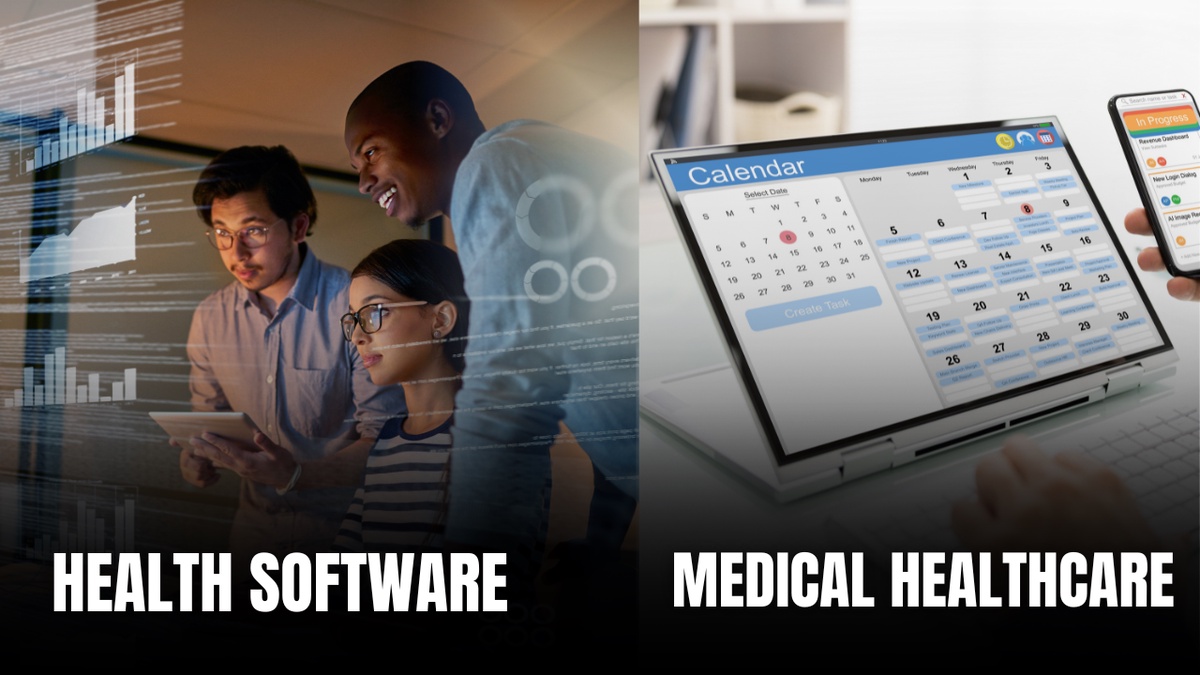In the realm of digital technology, the terms "health software" and "medical software" are often used interchangeably, leading to confusion regarding their actual differences.
While both serve the Healthcare Software Development Company, they fulfill distinct purposes and cater to different aspects of healthcare management and delivery. Let's delve into the nuances that set them apart.
Health Software
Health software encompasses a broad spectrum of applications designed to promote general wellness, monitor lifestyle habits, and assist individuals in managing their health proactively.
This category includes a variety of tools such as fitness trackers, nutrition apps, mental health platforms, and telemedicine services.
Health software aims to empower users to take charge of their well-being by providing access to resources, information, and sometimes personalized guidance.
One of the key features of health software is its focus on preventive care. By enabling users to track their physical activity, monitor their diet, and manage stress levels, these applications contribute to maintaining a healthy lifestyle and preventing chronic conditions.
Additionally, some health software platforms offer features like symptom checkers and health risk assessments, allowing users to identify potential health issues early on and seek appropriate medical attention.
Another aspect of health software is its emphasis on user engagement and behavior modification. Many of these applications utilize gamification techniques, social interaction features, and personalized feedback to motivate users and encourage adherence to health goals.
By fostering a sense of accountability and community support, health software endeavors to make health management a more enjoyable and sustainable endeavor.
Medical Software
In contrast, medical software is specifically designed to support healthcare professionals in clinical settings and facilitate the delivery of patient care.
This category encompasses a diverse range of applications, including electronic health record (EHR) systems, practice management software, medical imaging software, and diagnostic tools.
Medical software is characterized by its adherence to regulatory standards, interoperability requirements, and its integration into the healthcare infrastructure.
One of the primary functions of medical software is to streamline administrative tasks and optimize workflow efficiency within healthcare organizations.
EHR systems, for example, enable healthcare providers to record patient information, track medical history, and manage treatment plans electronically.
Practice management software automates scheduling, billing, and insurance claims processing, reducing administrative burdens and allowing clinicians to focus more on patient care.
Moreover, medical software plays a crucial role in enhancing clinical decision-making and patient outcomes.
Diagnostic tools, such as medical imaging software and laboratory information systems, assist healthcare professionals in interpreting test results, diagnosing conditions, and devising treatment strategies.
These applications leverage advanced algorithms, machine learning, and data analytics to analyze complex medical data and provide actionable insights.
Conclusion
In summary, while health software and medical software both contribute to the healthcare ecosystem, they serve distinct purposes and target different stakeholders.
Health software empowers individuals to manage their health proactively and adopt healthy lifestyle behaviors, whereas medical software supports healthcare professionals in delivering quality patient care and optimizing clinical workflows.
By understanding the differences between these two categories, stakeholders can make informed decisions about the selection and utilization of digital health solutions.


No comments yet